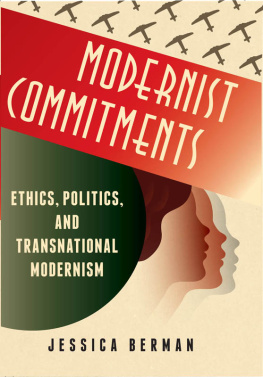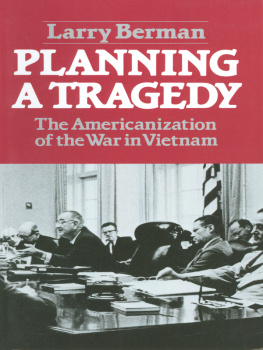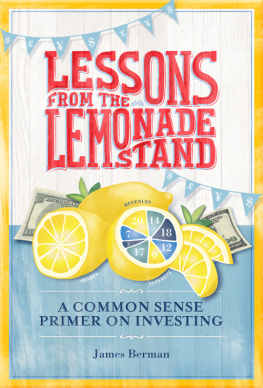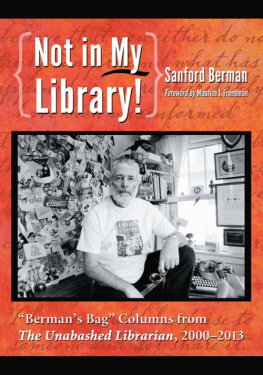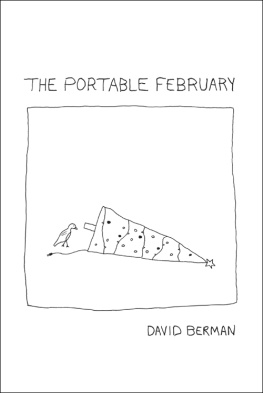Berman - The Trust Trifecta
Here you can read online Berman - The Trust Trifecta full text of the book (entire story) in english for free. Download pdf and epub, get meaning, cover and reviews about this ebook. publisher: Iguana Books, genre: Business. Description of the work, (preface) as well as reviews are available. Best literature library LitArk.com created for fans of good reading and offers a wide selection of genres:
Romance novel
Science fiction
Adventure
Detective
Science
History
Home and family
Prose
Art
Politics
Computer
Non-fiction
Religion
Business
Children
Humor
Choose a favorite category and find really read worthwhile books. Enjoy immersion in the world of imagination, feel the emotions of the characters or learn something new for yourself, make an fascinating discovery.
The Trust Trifecta: summary, description and annotation
We offer to read an annotation, description, summary or preface (depends on what the author of the book "The Trust Trifecta" wrote himself). If you haven't found the necessary information about the book — write in the comments, we will try to find it.
The Trust Trifecta — read online for free the complete book (whole text) full work
Below is the text of the book, divided by pages. System saving the place of the last page read, allows you to conveniently read the book "The Trust Trifecta" online for free, without having to search again every time where you left off. Put a bookmark, and you can go to the page where you finished reading at any time.
Font size:
Interval:
Bookmark:
Life is really simple, but we insist on making it complicated.
Confucius
As with many things in life, people tend to complicate effective communication. True, you need to be thoughtful about what and how things are said, but at the same time, you should avoid overthinking things. After all, thats what lies at the heart of authenticity. Whats important to appreciate is that powerful and impactful communication is a fine balance of intentions, skills, and commitment. There are many contributing factors to strong and poor communication, so being thoughtful is absolutely critical.
Thinking about how you like to be engaged by others and how that makes you feel is a good barometer to begin with. Modifying your style and trying out different approaches will also provide you with feedback and insight into how your communication is received by others. As Peter Drucker once said: Everything measured, improves.
The Trust Trifecta concept is straightforward enough, but your communication strategy becomes more complex when you consider other must-haves. Luckily, these are also readily learnable.
On the following pages are my communication must-haves. Integrating these into your approach will help to reinforce and strengthen your ability to build trust with your words.
Practice, Practice, Practice: Just as world-class athletes practice on an ongoing basis so that they are play ready for important games and tournaments, leaders need to invest the required time to practice being a world-class communicator. We have already established that free time is a rare commodity for leaders, so being structured about this will be necessary. It seems obvious, but if you ask executives how much time they spend reviewing and internalizing messages they want to communicate, the answer is likely not much. Yes, they might bring in a coach for a large presentation or an important meeting, but after the tips n tricks have been learned, many leaders fail to spend time before each interaction thinking about how they will communicate.
You need to take a moment to prepare by asking yourself: What is the purpose of this specific communication? Is it to inform? Persuade? Influence? Recommend? Provide feedback? Just listen? What is it about this specific audience that I should consider? What are they needing to hear from me?
Thinking about and being clear about your purpose will help inform and shape your communications approach.
At the end of the day, spending time with your content and rehearsing how you want to share it is the most important driver in helping you to be more authentic. Doing so will enable you to come across as less scripted and help you connect more powerfully with those you are speaking with.
In essence, the more comfortable you are with your content, the more comfortable you will appear when delivering it.
Personalize Your Communication: As much as you should make it about the audience (remember, its not about you!), sharing personal anecdotes and insights can actually help you reinforce that your focus is on the audience. By revealing something personal, you build a connection. Many times, leaders will rely on facts and stats in their communications to bolster the credibility of what they are saying. There is value in this approach, but this value can be substantially increased by using that data and connecting it to something personal. As Stacey Snider, former President of DreamWorks said, The best stories lead from the heart, not the mind.
Use Body Language: Comprising a set of non-verbal cues that includes posture and gestures, body language has a significant impact on how your communication is received. Leaning forward, tilting your head in the direction of someone you are speaking to, and making eye contact are all important. Gesturing is closely linked to speech, so using it while we talk can actually enhance our thinking.
Whenever I encourage executives and others to incorporate gestures into their delivery, I consistently find that their verbal content improves. Experiment with this and youll find that the physical act of gesturing helps you form clearer thoughts and speak in tighter sentences with more declarative language. Again, this is more art than science, so find gestures that work for you and your style of delivery so they come across as natural versus forced.
Watch Your Cadence: One of the most common mistakes people make when communicating is speaking too fast. This is particularly true when delivering a presentation or a speech. People get nervous. The best antidote to talking fast is controlling and slowing your breathing. You need to practice this as it doesnt come naturally for most. The more you practice, the more comfortable with the content and the less nervous you will be. The less nervous you are, the slower you will speak. I promise.
Much has been written about cadence especially when it comes to some of the greatest orators of our time. John F. Kennedy (JFK) is said to have talked very fast. In fact, Kennedy made it into the Guinness Book of World Records for his rate of speaking. During a speech in 1961, he spoke 327 words in just one minute. Thats about 3 times faster than the normal conversation rate.
During his inaugural address, however, he slowed down to a remarkable 96.5 words per minute, the slowest rate in the past sixty years of inauguration speeches. Proficient at pacing, JFK had a keen sense of how to use language to get the audience both impassioned and focused, and measured each word to emphasize the meaning of his message.
Use Intonation: As with pacing, varying your level of intonation can also be very effective at emphasizing certain points. Be selective though: the last thing an audience (whether of one or one hundred) wants to hear is a verbal symphony coming from your mouth it will only serve as a distraction. One common habit is upspeak, the tendency to raise the pitch of ones voice at the end of a sentence. This is most noticeable during presentations in my experience.
While there are fierce debates on the existence and origin of upspeak, as well as views that women tend to do this more than men, here is my view: Whether you are male or female, raising your voice to a higher pitch at the end of a sentence (in the absence of asking a question) conveys a lack of confidence in what you are saying. It comes across as if you are hedging or reluctant, and as a result, creates a sense that you doubt what youre saying. If you appear to not trust your own words, how can you possibly expect others to trust them?
Avoid Technical Language: For anyone who has specialized knowledge of a topic, avoiding technical language when discussing it can be very difficult. Yet using this type of language when trying to connect with non-technical people only serves to distract, or worse, bore people: they will tune out since they have no idea what you are saying. Remember, we want to make it easy for people to understand, and therefore connect with, what we are saying. The goal isnt just sharing information, but making a connection in order to build trust.
Covet Clarity: By keeping things simple, you will vastly improve the clarity of thought which is the cornerstone of powerful communication. If you are not absolutely clear on what you are saying, then how can you reasonably expect others to understand it? This is part and parcel of why you should avoid technical language, but even more important is ensuring your ideas come across clearly. Herb Kelleher, the longest-serving CEO of Southwest Airlines, once told someone, I can teach you the secret to running this airline in thirty seconds. This is it: We are THE low-cost airline. Once you understand that fact, you can make any decision about this companys future as well as I can. Pretty simple, no?
Font size:
Interval:
Bookmark:
Similar books «The Trust Trifecta»
Look at similar books to The Trust Trifecta. We have selected literature similar in name and meaning in the hope of providing readers with more options to find new, interesting, not yet read works.
Discussion, reviews of the book The Trust Trifecta and just readers' own opinions. Leave your comments, write what you think about the work, its meaning or the main characters. Specify what exactly you liked and what you didn't like, and why you think so.


